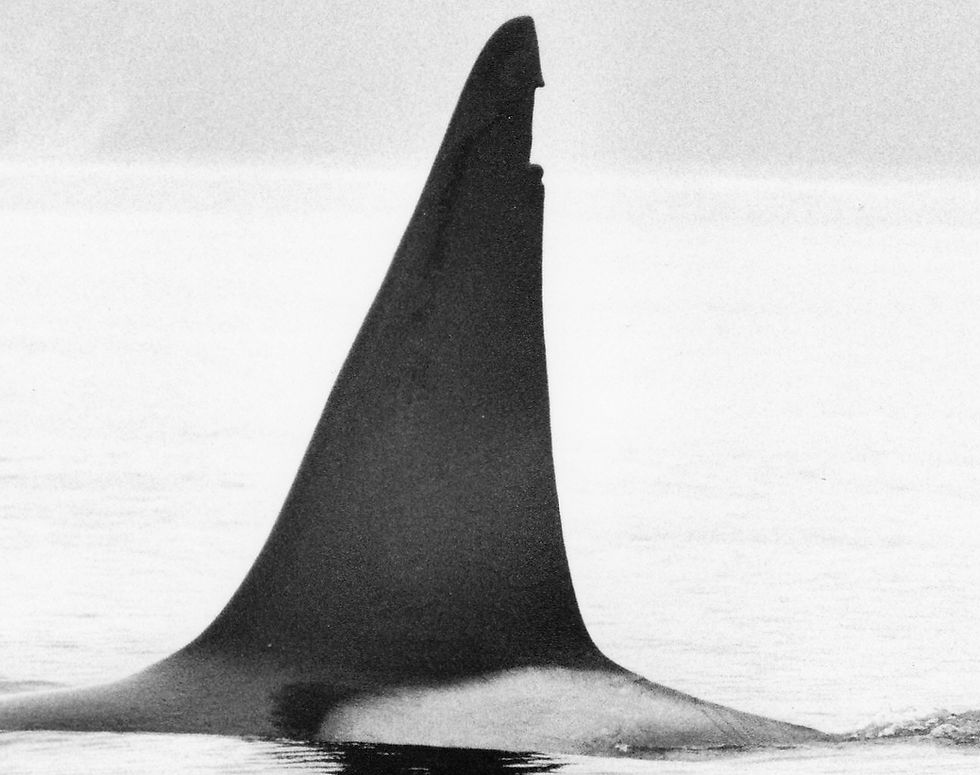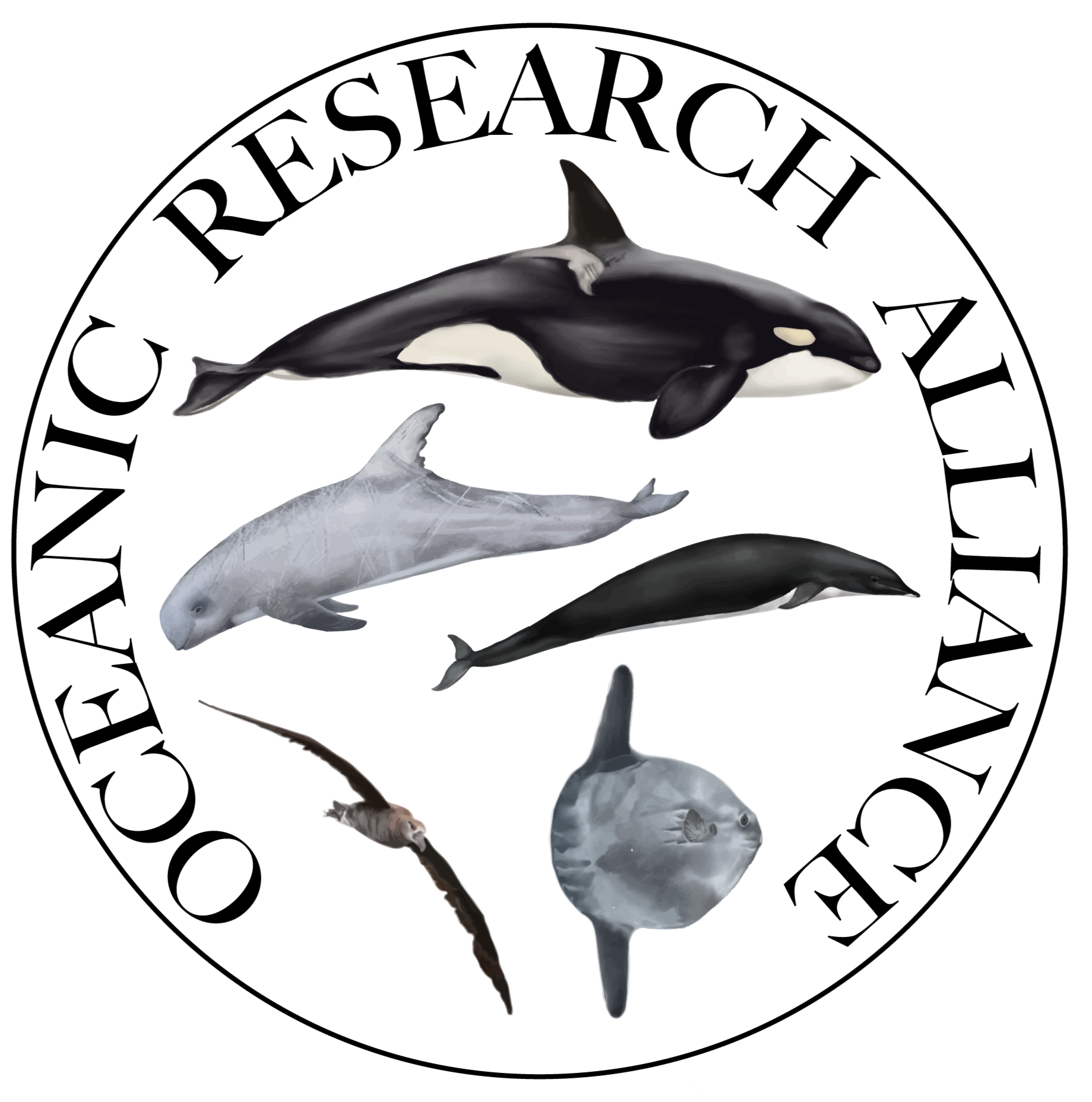
Projects



California Current Killer Whale Study
Since 2005, the Oceanic Research Alliance has been conducting extensive research on killer whales along the Pacific coast. Our field studies began off southern Vancouver Island, where we focused on the behavioral ecology, fine-scale habitat use, and population dynamics of transient (mammal-eating) killer whales in coastal waters. Over the years, our research has expanded to cover both coastal and offshore waters of the California Current System, from southern British Columbia to southern California. We currently operate three primary field sites: Otter Point (Sooke), British Columbia; Newport, Oregon; and Monterey Bay, California. Additionally, our dataset extends back to 1979, thanks to the pioneering efforts of Dr. Marilyn Dahlheim at NOAA's National Marine Mammal Laboratory in Southeast Alaska. This long-standing research legacy has made our study one of the most comprehensive and detailed investigations of killer whales in the North Pacific.
T087 in Glacier Bay, Alaska. Photo Credit: Marilyn Dahlheim.







This large scale study of killer whales in the California Current System is collaborative involving a number of organizations, including NOAA's Southwest Fisheries Science Center, University of British Columbia's Institute for the Oceans and Fisheries Marine Mammal Research Unit, Pacific WildLife Foundation, and Marine Life Studies.
Foraging Behaviour and Ecology of Transient Killer Whales
This study investigates the foraging behaviour and ecology of transient killer whales across the California Current System, from British Columbia to California. By documenting hunting strategies, prey selection, and group coordination, we seek to understand how these predators influence coastal and offshore food webs and how their foraging patterns are shaped by environmental and social factors.
We use focal follows, a well-established behavioural research method, to track and document the activity of specific killer whale groups over extended observation periods.
Continuous Monitoring:
Research is conducted from three research areas: Sooke, British Columbia, Newport, Oregon, and Monterey Bay, California. Research vessels and shore-based stations are used to follow groups, recording fine-scale movements, surfacing patterns, and hunting events.
Goals
-
Identify key prey species and hunting strategies used by transient killer whales.
-
Examine how group size, age, and social structure influence hunting success.
-
Assess spatial and temporal patterns of foraging in relation to habitat features such as shelf breaks, kelp forests, and haul-out sites.
-
Contribute data to conservation efforts by highlighting predator–prey dynamics in the California Current Ecosystem.
Significance
This project provides essential insights into the ecology of transient killer whales and their role in coastal ecosystems. By combining non-invasive observation methods with long-term monitoring, our work supports conservation planning, enhances scientific understanding, and engages the public in the stewardship of marine predators and their prey.

California Current Killer Whale Study Updates


Oceanic Killer Whale Survey
This study is dedicated to studying the ecology, behavior, and population dynamics of killer whales inhabiting open ocean habitats across the California Current Ecosystem (CCE)—from Vancouver Island, British Columbia to Baja California, Mexico—emphasizing shelf-break, slope, and oceanic (>30 nm) waters. The CCE’s strong upwelling, eddies, and fronts make it a globally important foraging system; yet the distribution, ecology, and population structure of oceanic killer whales here remain poorly resolved. Establishing robust baselines is essential for conservation and for anticipating ecosystem change.
Research initiatives
-
Map Distribution & Seasonality
Quantify killer whale occurrence along the 200–2,000m isobaths, offshore seamounts/banks, and persistent frontal zones; describe seasonal and interannual patterns linked to upwelling phases and climate indices. -
Estimate Abundance & Population Structure
Use line-transect methods, photo-ID, and acoustics to derive density/abundance of transient, offshore, and oceanic killer whale and assess associations, group size, and potential sub-populations. -
Characterize Ecology & Diet
Integrate behavioural observations, acoustic call types, eDNA, and (permitted) biopsy samples to infer prey use and trophic position of different killer whale ecotypes. -
Social Structure of offshore (fish-eating) killer whales
Characterize the social structure of offshore killer whales through the use of photo-identification of association patterns. -
Build an Open, Reusable Evidence Database
Produce datasets and an offshore killer whale photo-ID catalog, and habitat-use models to inform management in U.S., Canadian, and cross-border forums. -
Build a collaborative, transboundary initiative that integrates killer whale sighting data reported by commercial and sport tuna fishing vessels operating across the California Current and eastern North Pacific. Killer whales, including poorly understood offshore and oceanic populations, are frequently observed and have been documented interacting with tuna and other pelagic fisheries, yet these observations are rarely captured in systematic research programs.
Oregon Coast Killer Whale Monitoring Program
he Oregon Coast Killer Whale Monitoring Program is a collaborative research and community science initiative dedicated to documenting the occurrence, movements, and behavior of killer whales along the Oregon coastline. Our team of marine ecologists, students, and local partners work together to collect sighting reports, photographs, and acoustic recordings that help track killer whale populations in the region.
By combining systematic surveys with public observations from fishers, whale-watch operators, and coastal residents, the program builds a clearer picture of how killer whales use Oregon’s coastal waters. This information is vital for understanding their role in marine ecosystems, identifying important habitats, and supporting conservation strategies.
Through outreach and education, the Oregon Coast Killer Whale Monitoring Program also fosters community engagement—encouraging coastal communities to contribute to whale science and stewardship. Together, we are creating one of the most comprehensive long-term datasets on killer whales in Oregon waters, connecting science, conservation, and people.


Killer Whale Population Ecology
This project investigates the population ecology of killer whales (Orcinus orca) using photo-identification (photo-ID) and mark–recapture statistical methods. Killer whales are long-lived, highly social apex predators whose population structure, survival rates, and habitat use vary across ecotypes and regions. Understanding these dynamics is essential for conservation and management, particularly in ecosystems experiencing rapid environmental and anthropogenic change.
Research initiatives
-
Estimate Population Size and Trends
Use mark–recapture analyses of individually identifiable whales to produce robust abundance estimates and monitor population trends over time. -
Assess Demographic Parameters
Quantify survival rates, calving intervals, and recruitment patterns within and across killer whale subpopulations. -
Investigate Social Structure and Fidelity
Use long-term photo-ID data to describe matrilineal associations, dispersal, and group stability. -
Characterize Habitat Use
Relate sighting data to geographic locations and environmental variables to determine spatial and seasonal distribution patterns. -
Support Conservation and Management
Provide population-level metrics to inform recovery planning, ecosystem assessments, and transboundary management strategies.







